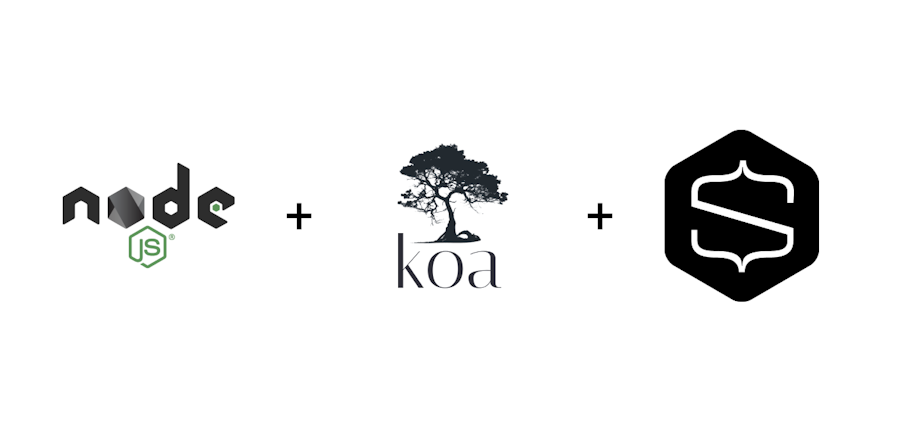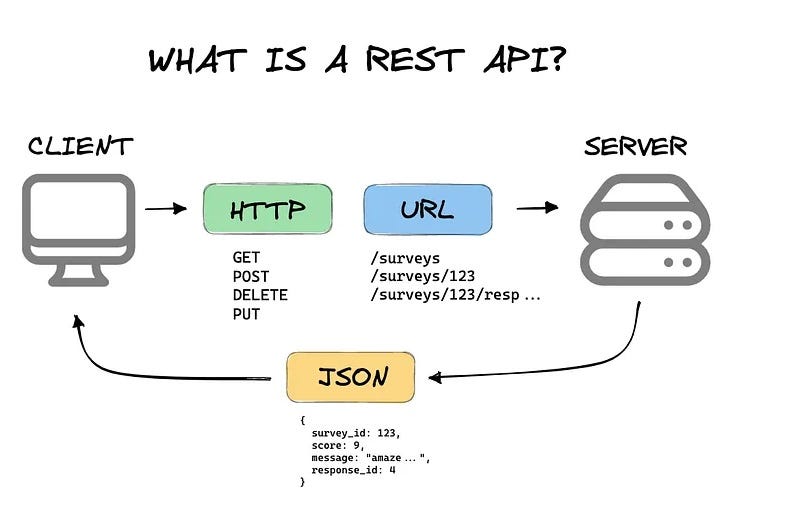In the ever-evolving world of server-side JavaScript, Node.js remains a dominant force for building fast, scalable network applications. Within this ecosystem, a constant stream of Node.js News highlights the frameworks that developers choose to build upon. While Express.js has long been the de facto standard, Koa.js, created by the same team, offers a more modern, minimalist, and expressive foundation for web applications and APIs. Koa leverages ES2017 async functions to eradicate callback hell and simplify error handling, providing a more robust and enjoyable development experience.
This article provides a comprehensive technical guide to Koa.js. We will explore its core concepts, walk through practical implementations of a RESTful API, delve into advanced techniques, and discuss best practices for building production-ready applications. Whether you’re a seasoned developer looking for an alternative to Express or a newcomer to the Node.js world, you’ll gain actionable insights into why Koa remains a powerful and relevant choice amidst a sea of frameworks like Fastify, NestJS, and AdonisJS.
Understanding the Core of Koa: Middleware, Context, and Async/Await
Koa’s design philosophy is centered on minimalism. It ships with no bundled middleware, providing a lean core that you can extend precisely as needed. This philosophy is built upon three fundamental pillars: the middleware flow, the context object, and the native use of async/await.
The Cascading Middleware Flow
Unlike traditional frameworks that handle requests and responses in a linear chain, Koa uses a cascading middleware pattern that is both elegant and powerful. Each middleware function is an async function that receives two arguments: ctx (the context) and next (a function to call the “downstream” middleware). When await next() is called, control is passed to the next middleware in the stack. After the downstream middleware has finished its execution, control returns to the upstream function, allowing for powerful pre- and post-request logic.
This “onion-like” structure is perfect for tasks like logging, response time tracking, and error handling. Let’s see a basic example.
// index.js
const Koa = require('koa');
const app = new Koa();
// Middleware 1: Logger and Response Timer
app.use(async (ctx, next) => {
const start = Date.now();
console.log(`--> ${ctx.method} ${ctx.url}`);
await next(); // Pass control to the next middleware
const ms = Date.now() - start;
ctx.set('X-Response-Time', `${ms}ms`);
console.log(`<-- ${ctx.method} ${ctx.url} - ${ms}ms`);
});
// Middleware 2: Response
app.use(async ctx => {
// This is the innermost middleware
ctx.body = 'Hello from Koa!';
});
app.listen(3000, () => {
console.log('Server running on http://localhost:3000');
});In this example, the first middleware logs the incoming request and starts a timer. It then calls await next(), pausing its own execution. The second middleware sets the response body. Once it completes, control flows back to the first middleware, which calculates the duration, sets a custom header, and logs the final output.
The Context (ctx) Object
Koa introduces a Context object, commonly aliased as ctx, which encapsulates Node’s request and response objects into a single, more convenient API. This avoids the need to pass req and res around. The context provides helpful aliases and methods. For example:
ctx.bodyis a getter/setter for the response body.ctx.statussets the HTTP status code.ctx.request.queryaccesses parsed query string parameters.ctx.response.set(name, value)sets a response header.
This unified object streamlines development and makes the code cleaner and more readable.

Practical Implementation: Building a RESTful API with Koa
Let’s move beyond theory and build a simple RESTful API for managing a list of tasks. For this, we’ll need to introduce a couple of essential middleware packages from the Koa ecosystem: koa-router for handling routes and koa-bodyparser for parsing incoming request bodies (e.g., JSON).
First, install the necessary dependencies:
npm install koa koa-router koa-bodyparserNow, let’s structure our API. We’ll create endpoints to get all tasks, get a single task by ID, and create a new task.
// api.js
const Koa = require('koa');
const Router = require('koa-router');
const bodyParser = require('koa-bodyparser');
const app = new Koa();
const router = new Router();
// In-memory "database" for demonstration
const tasks = [
{ id: 1, title: 'Learn Koa.js', completed: false },
{ id: 2, title: 'Build a REST API', completed: false },
{ id: 3, title: 'Deploy the application', completed: false },
];
let nextId = 4;
// Use body parser middleware to handle JSON request bodies
app.use(bodyParser());
// Define our routes
router.get('/tasks', async (ctx) => {
ctx.body = tasks;
});
router.get('/tasks/:id', async (ctx) => {
const id = parseInt(ctx.params.id);
const task = tasks.find(t => t.id === id);
if (task) {
ctx.body = task;
} else {
ctx.status = 404;
ctx.body = { error: 'Task not found' };
}
});
router.post('/tasks', async (ctx) => {
const { title } = ctx.request.body;
if (!title) {
ctx.status = 400;
ctx.body = { error: 'Title is required' };
return;
}
const newTask = {
id: nextId++,
title,
completed: false,
};
tasks.push(newTask);
ctx.status = 201; // Created
ctx.body = newTask;
});
// Use the router middleware
app.use(router.routes()).use(router.allowedMethods());
app.listen(3000, () => {
console.log('API server running on http://localhost:3000');
});This example demonstrates a clean and scalable way to define API endpoints. The koa-router middleware provides a clear API for defining routes based on HTTP methods and URL patterns. The koa-bodyparser automatically parses incoming JSON and makes it available on ctx.request.body. This modular approach is central to the Koa News narrative: start small and add only what you need, keeping your application lean and focused.
Advanced Techniques: Error Handling and Authentication
As applications grow, robust error handling and security become critical. Koa’s middleware architecture excels at centralizing these cross-cutting concerns.
Centralized Error Handling
A common pattern is to create a dedicated error-handling middleware and place it at the very top of the middleware stack. This allows it to catch any errors thrown by downstream middleware or route handlers.
// error-handler.js
async function errorHandler(ctx, next) {
try {
await next();
} catch (err) {
// Log the error for debugging purposes
console.error(err);
// Set a generic error response
ctx.status = err.status || 500;
ctx.body = {
error: {
message: err.message || 'Internal Server Error',
},
};
// Optionally emit an 'error' event for Koa's default error logger
ctx.app.emit('error', err, ctx);
}
}
// In your main app file (e.g., api.js)
// const errorHandler = require('./error-handler');
// app.use(errorHandler); // Add this as the FIRST middleware
// ... rest of your middleware and routesBy wrapping the await next() call in a try...catch block, this middleware acts as a safety net for the entire application. Any unhandled promise rejection or thrown error in your routes will be caught here, ensuring a consistent and user-friendly JSON error response is always sent, preventing stack traces from leaking to the client.
Authentication Middleware
Protecting routes is another perfect use case for middleware. You can create a function that checks for a valid JSON Web Token (JWT) in the `Authorization` header. If the token is valid, it attaches user information to the context and calls `next()`. If not, it throws an authentication error.

While libraries like koa-passport or koa-jwt are excellent for production, a simple conceptual example looks like this:
// auth-middleware.js
const jwt = require('jsonwebtoken'); // You'd need to `npm install jsonwebtoken`
const SECRET_KEY = 'your-super-secret-key';
async function protect(ctx, next) {
const authHeader = ctx.headers.authorization;
if (!authHeader || !authHeader.startsWith('Bearer ')) {
ctx.throw(401, 'Authentication invalid');
}
const token = authHeader.split(' ')[1];
try {
const decoded = jwt.verify(token, SECRET_KEY);
ctx.state.user = decoded; // Attach user info to ctx.state for downstream use
await next();
} catch (err) {
ctx.throw(401, 'Token is not valid');
}
}
// To protect a specific route with koa-router:
// router.get('/protected/resource', protect, async (ctx) => { ... });This middleware can be applied to individual routes or to an entire router instance, providing a flexible way to secure your API endpoints.
Best Practices, Optimization, and the Modern Landscape
Building a robust Koa application involves more than just writing middleware. Adhering to best practices ensures your application is maintainable, scalable, and performant.
Application Structure
For larger projects, avoid putting all your logic in one file. A good practice is to separate concerns:
/routes: Define your API routes in separate files./controllers: House the logic for each route handler./middleware: Store custom middleware like error handlers or authentication./services: Abstract business logic, such as database interactions.
This structure makes the codebase easier to navigate and test. Tools like ESLint News and Prettier News are essential for maintaining code quality and consistency across your team.

Performance Considerations
Koa’s minimal core is inherently fast. Performance bottlenecks are more likely to come from your own code, such as inefficient database queries or blocking I/O operations. Always use asynchronous methods for I/O and leverage Koa’s async nature to handle many concurrent requests efficiently. The rise of new JavaScript runtimes like Bun News and Deno News also puts a spotlight on performance, and Koa’s modern design makes it well-suited to run in these environments.
Koa in the Broader Ecosystem
While Koa is excellent for APIs, it exists in a rich ecosystem. When building a full-stack application, you might use Koa as the backend API for a frontend built with frameworks covered in React News, Vue.js News, or Svelte News. Modern full-stack frameworks like Next.js News and RedwoodJS News often have their own integrated API layers, but for decoupled microservices or a dedicated backend, Koa remains a top-tier choice. Its philosophy also aligns well with the latest TypeScript News, as it can be easily integrated with TypeScript for enhanced type safety.
Conclusion: The Enduring Elegance of Koa.js
Koa.js represents a significant evolution in Node.js web development. By embracing modern JavaScript features like async/await and focusing on a minimal, extensible core, it provides a powerful and elegant foundation for building APIs and web services. Its cascading middleware architecture offers unparalleled flexibility for handling cross-cutting concerns like logging, error handling, and authentication in a clean, centralized manner.
While the JavaScript world is always buzzing with updates from Fastify News or the structured approach of NestJS News, Koa’s simplicity and expressiveness give it an enduring appeal. It empowers developers to build exactly what they need without the overhead of a more opinionated framework. For your next Node.js project, especially if it involves building a clean, modern API, Koa.js is a framework that absolutely deserves your consideration. The next step is to explore its rich third-party middleware ecosystem and start building your own robust and scalable applications.

